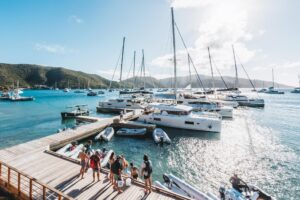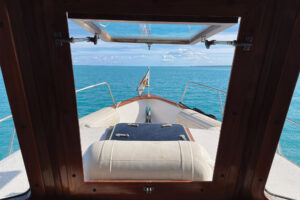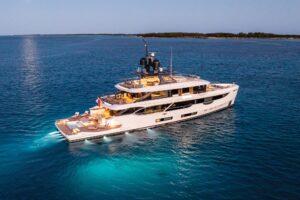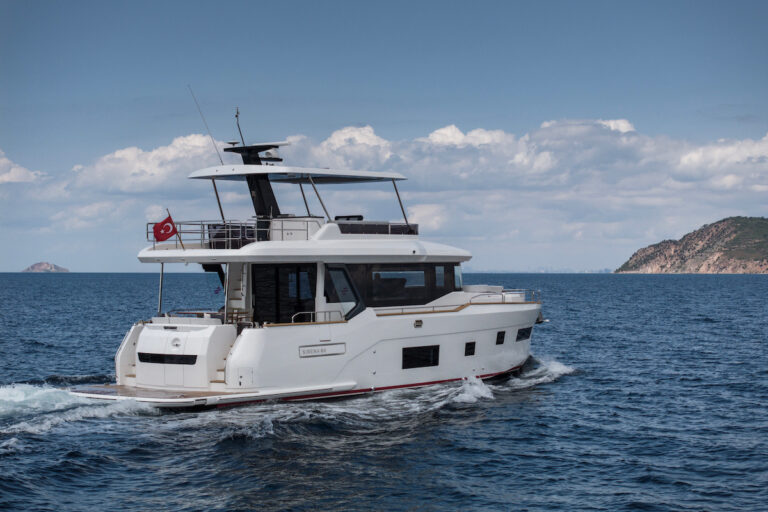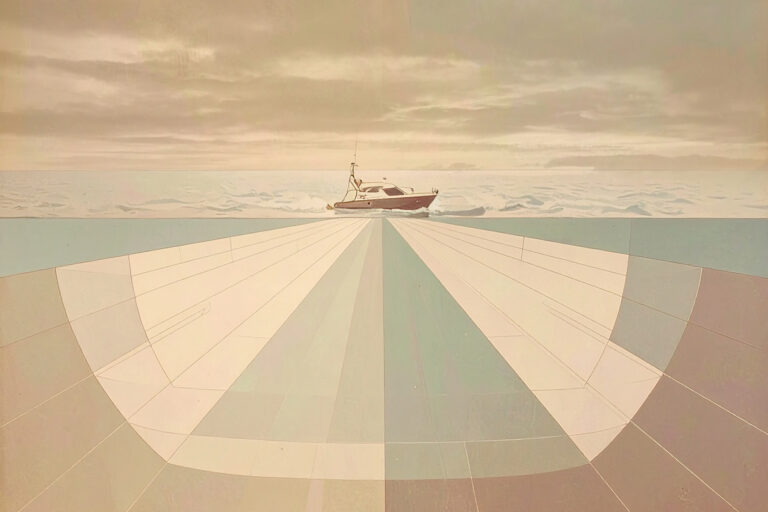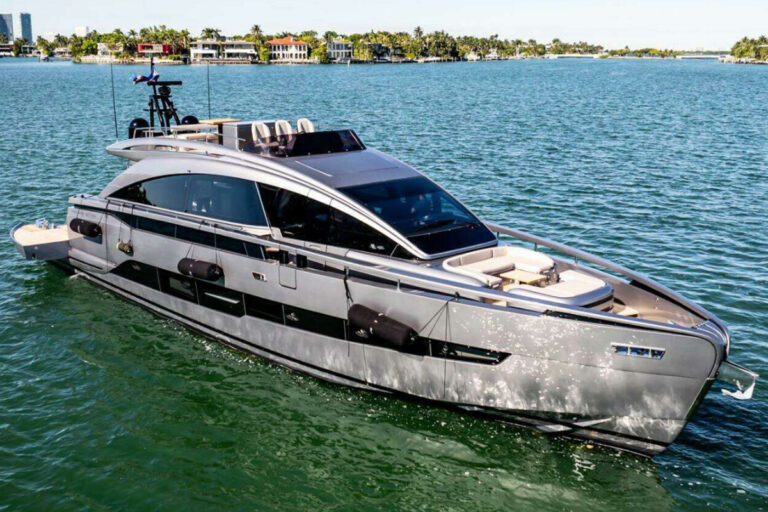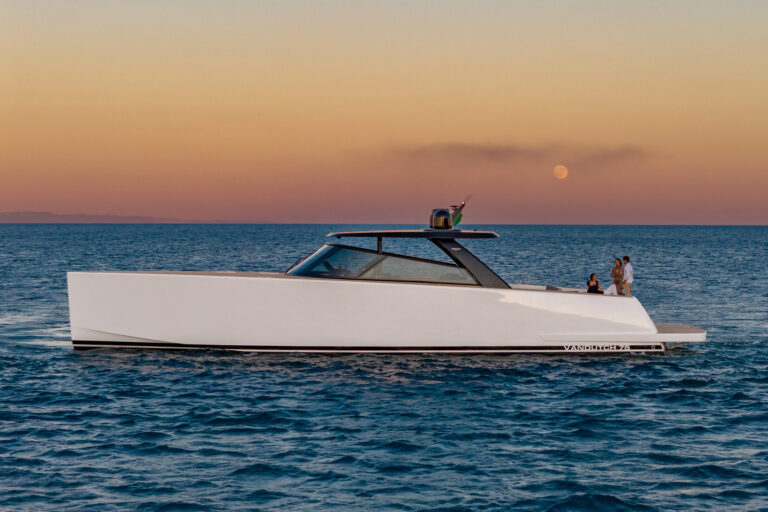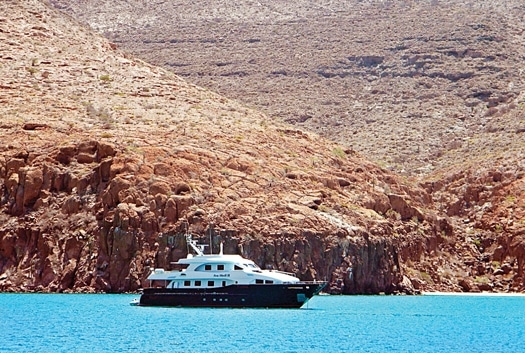
ytgjan26ctcortez525.jpg
Forged in an ancient clash of tectonic plates, volcanic explosions, and flowing lava, you could say that Mexico’s Baja Peninsula has earned the powerful effect it has on the seafaring imagination.
As mariners, we hope that each new cruising ground instills in us a distinct memory, but let’s face it: A lot of our tropical haunts look alike. Not so the Sea of Cortez, a deep, dark body of water separating the 700-mile Baja Peninsula from the Mexican “mainland.” Nowhere else a yacht might go will look like Baja. Palm trees? Yes, plenty of them are scattered about, even an occasional mangrove, but the dominant feature here is stone, garnished with gravel and cactus.
Perhaps because of the play of light on massive irregular surfaces, perhaps because of thermal distortion from radiant heat, those who look at this landscape from seaward often describe the sensation as dreamlike, otherworldly. “The very air here is miraculous, and outlines of reality change with the moment,” author John Steinbeck penned in Log from the Sea of Cortez. “The sky sucks up the land and disgorges it. A dream hangs over the whole region, a brooding kind of hallucination.”
Steinbeck wrote Log from the Sea of Cortez in 1941 to document his circumnavigation of what is otherwise known as the Gulf of California aboard Western Flyer. A friend of Steinbeck had converted the 70-foot fishing boat into a research vessel to study invertebrate sea life in the gulf, and the author joined the crew as a way of unwinding after publication of his masterpiece The Grapes of Wrath.
Over the past seven years, I have tried to follow in Steinbeck’s wake, arriving on a Mirage N37 at Los Cabos in 2003, exploring the territory between the cape and La Paz in 2008, and finally taking a 47-foot powercat from La Paz northward last summer. That last trip clinched it, convincing me that there is no better way to earn sea time than cruising these rugged shores, especially if you enjoy catching and eating fish.
La Paz-City of Peace-is clean, attractive, and friendly toward Americans. The growing expatriate community and influx of wealthy mainland Mexicans are helping to support an increasingly sophisticated dining scene, which we explored before beginning our cruise. El Patron on the waterfront can best be described as a combination Ruth’s Chris and Chart House. Restaurants such as El Ajibe and Las Tres Virgenes specialize in the region’s new “Baja-Med” cuisine, a fusion of Mediterranean, Mexican, and Asian styles using fresh local ingredients. At the entrance to the harbor, the newest of five La Paz marinas, Costa Baja Resort and Marina, also boasts fine dining venues on site.

| | |
Thanks to the chefs of La Paz, we embarked on our Moorings 47 Powercat in a good mood, bound for Puerto Escondido, about 115 nautical miles up the coast. Puerto Escondido has a Fonatur/Singlar marina with about 20 slips and 115 mooring balls. I wanted to take a look at this facility because it is one of the steps in Mexico’s ambitious “Nautical Ladder” plan for the Baja.
Los Cabos and La Paz boast ample marine infrastructure, but Mexican policymakers know that to develop the Sea of Cortez for yachting, more facilities will be needed along its vast and largely empty shores. Ultimately, the government plans to spend $1.9 billion to develop 27 marinas on both the peninsula and mainland sides of the gulf, spaced like rungs on a ladder, and never more than 100 miles apart. Seventeen are now in place, and several of those are Fonatur properties, owned and operated by the Mexican government.
Of course, one of the reasons the Sea of Cortez remains so undeveloped is that it is difficult to reach-and for Californians, even more difficult to return from. Because of prevailing adverse winds and seas, the northbound passage along the Pacific Coast has been dubbed “The Baja Bash.” Skippers on the U.S. East Coast have two options: either take their yachts on their own bottoms from Florida via the Panama Canal-3,300 nautical miles-or employ a vessel-shipping service. Both Yacht Path and Dockwise use La Paz as a drop-off point.
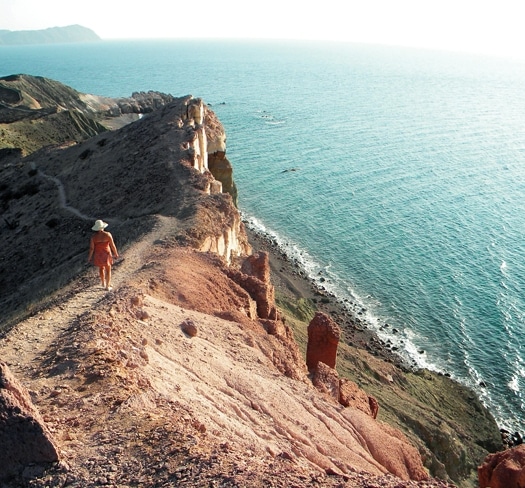
| | |
Another intriguing possibility for the future is a feature of the Nautical Ladder scheme. Plans call for a haul-out at Santa Rosalita, less than halfway down the peninsula on the Pacific Coast. Yachts up to 55 feet LOA would be hauled by truck and hydraulic trailer to the Bay of the Angels on the Sea of Cortez. Utility cables crossing this “land bridge” would be buried so sailboats could be hauled mast-in. The land bridge would be particularly advantageous to vessels returning to the U.S. because it would let them bypass nearly 500 miles of Baja Bash.
During our trip to Puerto Escondido, we saw ample proof of the late Jacques Cousteau’s observations about the Sea of Cortez, which he called “the world’s aquarium” and “the Galápagos of North America.” Though we were not there during winter, when the waters are chock-a-block with whales, including the photogenic grays, we saw copious sea life nonetheless. We witnessed a huge colony of sea lions, a pod of pilot whales, soaring manta rays, entire armies of frolicking dolphins, and scores of leaping yellowfin tuna.
In daylight, from our vantage high on the flying bridge, the scenery played with our sense of perception. Like the cloud games of childhood, we inferred familiar shapes and critters from the rock formations. I “saw” a queen on her throne, a luxury liner under way, an ancient Buddhist totem, and several crusader castles. Adjacent, four boulders conjured The Beatles. My favorite, though, was a pair of formations that looked like a big dog stalking a scared little monkey.
At night, relaxed by sundowner mango margaritas and far from the pollution of light and smog, the constellations beamed brighter than either of us could remember. We also spotted the pinprick glows of orbiting communications satellites, and though the Perseid meteor shower was past peak, the sky was lively with its stragglers.
Californians along the way said they loved the Baja peninsula, but I doubt that those nurtured in a western landscape could ever appreciate it as much as we who live along the woodlands and waters of the East Coast. So, if you are the kind of yachtsman with a to-do-before-I-die list, consider adding something altogether different, and cruise the Sea of Cortez. But don’t hurry for Baja’s sake; it’s five million years old, too vast and enduring ever to be ruined by development. It will be here.

